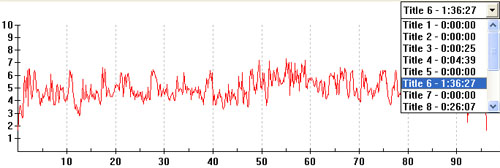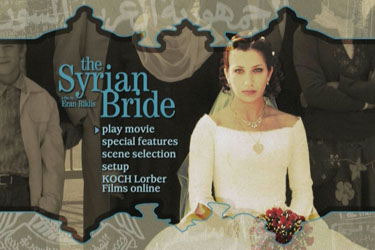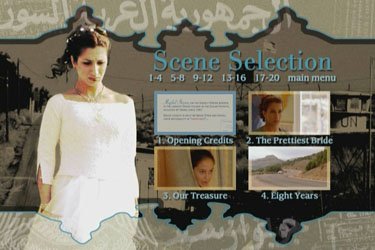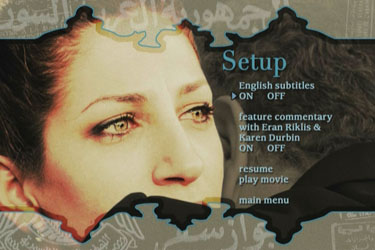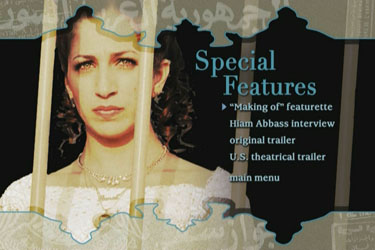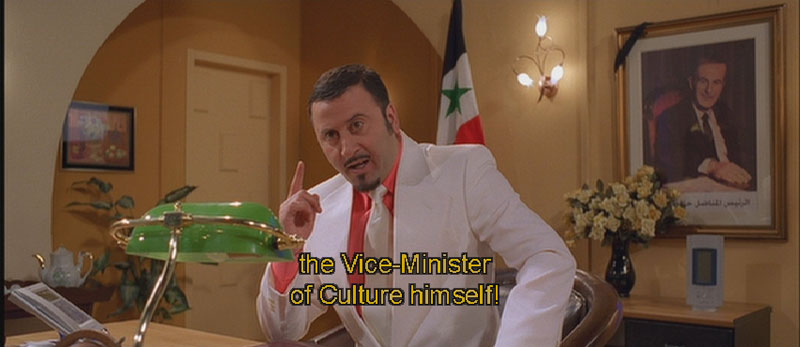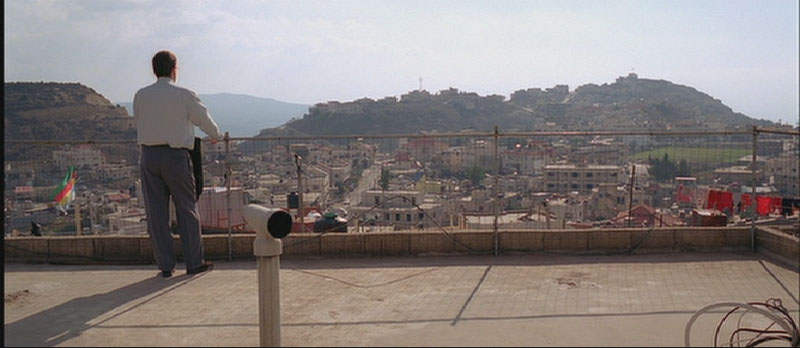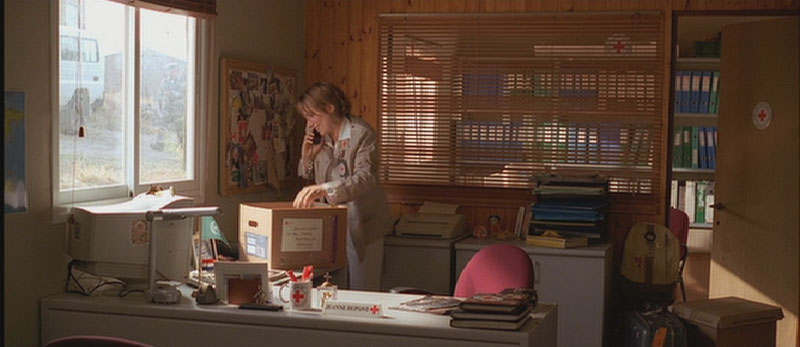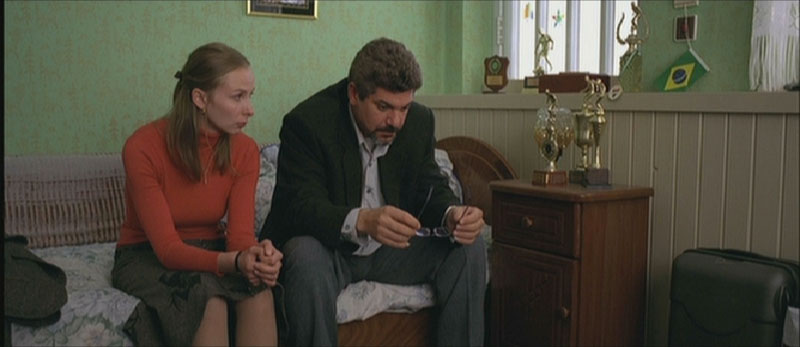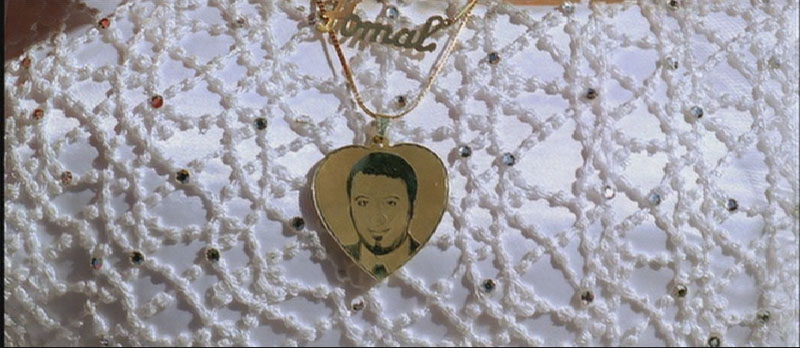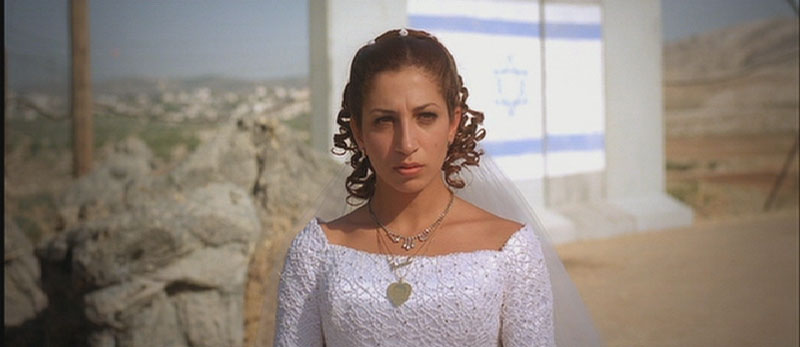![]()
![]()

![]()
![]()

(aka "La Fiancée syrienne (France)" or "Ha-Kala Ha-Surit (Israel)" or "Die Syrische Braut (Germany)")
directed by Eran Riklis
Israel 2004
“The Syrian Bride” (2004) is the latest release from
Israeli writer/director Eran Riklis and yet another addition to his
continuing series of films that examine the heavy influence that culture has
on lives in the Middle East. During his reserved and contemplative
thirty-year career in filmmaking (similar to Terrence Malick’s sparse but
noteworthy canon), Riklis has completed several critically acclaimed
films--the majority of which have been showcased at numerous film festivals,
including Berlin and Venice. “The Syrian Bride” marks new ground for Riklis,
who toured with the film overseas and picked up several major awards at
Montreal’s World Cinema Festival. Riklis has maintained his political
sensibilities with this film, which centers on a wedding and the political
strife that arises in spite of such a celebration.
Mona (Clara Khoury) is a young woman who has arranged to marry a soap opera
star from Syria. She is a member of the Druze community living under Israeli
occupation, and in crossing the border to Syria, it is extremely unlikely
that she will ever be able to return home. Her wedding serves as the
backdrop for Riklis to stage additional conflicts. Mona’s brother, Hattem
(Eyad Sheety), has been exiled from the family for betraying religious
values by marrying a Russian woman. After eight long years, his return to
the family is met by conflict between his sister, Amal (Hiam Abbass) and her
husband, Amin (Adnan Tarabshi). Amal has modernized values that clash with
Amin’s traditional beliefs. She wears contemporary clothing rather than
customary attire and decides to advance her education by attending
university. Consequently, Amin is seen as a weak husband in his community
because of his inability to control his wife’s actions. Riklis’ uses their
relationship to outline a major theme in this work--the presence and
practice of sexism in the Middle East.
One would assume that Mona would logically be the central character given
that the film revolves around her wedding, but she is rather
under-developed. Her background and past history are left almost entirely
ambiguous. The plot casually reveals that she’s been previously married, yet
to whom, when, or how is left to the audience’s imagination. Riklis’
decision to sustain such a mysterious central character is an important one;
it is yet another approach to his social commentary. Rather than spelling
out his message for his audience, Riklis places a face (Mona) on the
stereotypes and assumptions about Middle Eastern women. As a substitution
for a developed lead, he uses the supporting characters to supplement the
ambiguity with vivid portrayals and elaborate examinations. Amal’s bright
and optimistic persona outlines an individual who is desperately trying to
break free of the traditional constraints of her religion and geographical
obligations. In contrast, Hattem eagerly tries to revert to the principles
and customs that he left behind when he married. These characterizations
each embody a different aspect of Middle Eastern motivations, offering
insight into Mona’s possible state of mind and the burdens she carries.
Numerous critics have praised “The Syrian Bride” as a moving and deeply
emotional film. It’s certainly not difficult to sympathize with a good
portion of Riklis’ characters, but, at times, Riklis’ story fails to match
his actors’ talent. The grief and anxiety expressed by Mona’s family over
her departure should be devastating. However, I couldn’t help but feel
somewhat removed from the situation. Roger Ebert said it best when he noted
“[Mona] will never see [her family] again by crossing into Israel, but there
are such things as airplane flights from both Syria and Israel to perfectly
pleasant destinations that will welcome them both.” Evidently, such logic
weakens the premise for Riklis’ melodrama. More so, his decision to use the
border crossing as physical barrier to mirror Mona’s personal barriers as a
woman is hardly a new concept. Hany Abu-Assad’s “Rana’s Wedding” (2002),
which also starred Clara Khoury, also followed a wedding facing border
difficulties.
The greatest thing Riklis accomplishes with “The Syrian Bride” is exposing
the subtle truths and everyday conflict in the Middle East. Although I am
aware of the regressive attitudes towards woman and the stiff border
regulations, the religious implications of daily responsibilities and the
weight of familial decisions are issues I have rarely encountered. Seeing as
how it is hardly ethical to impose one’s cultural sensibilities on another
(re: the Gulf War), the political struggles in the Middle East are a touchy
issue to approach, making the immediacy of Riklis’ message all the more
relevant.
Posters
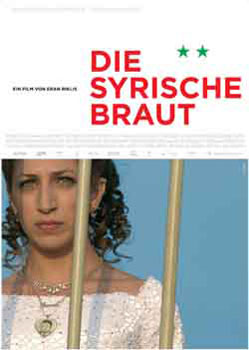 |
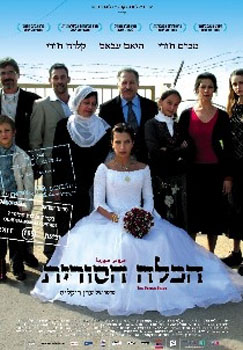 |
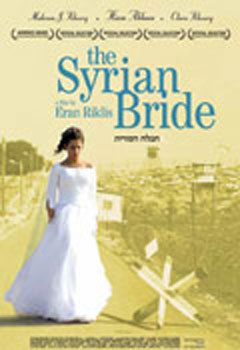 |
Theatrical Release: November 6, 2005
Reviews More Reviews DVD Reviews
DVD Review: Koch Lorber - Region 1 - NTSC
Big thanks to Kurtis J. Beard for the Review!
| DVD Box Cover |
|
CLICK to order from: |
| Distribution |
Koch Lorber Region 1 - NTSC |
|
| Runtime | 1:36:24 | |
| Video |
2.35:1 Original Aspect Ratio
16X9 enhanced |
|
|
NOTE: The Vertical axis represents the bits transferred per second. The Horizontal is the time in minutes. |
||
| Bitrate |
|
|
| Audio | Dolby Digital Arabic 2.0 | |
| Subtitles | English | |
| Features |
Release Information: Studio: Koch Lorber Aspect Ratio:
Edition Details: Chapters 20 |
|
| Comments |
“The
Syrian Bride” is presented in its original aspect ratio of 2.35:1.
The transfer is anamorphic, but suffers from occasional moments of
flickering. Seeing as how a significant portion of the film was shot
outdoors with heavy sunlight, some problems are to be expected.
Besides the flickering, Koch Lorber has released a crisp print with
vibrant colors and appropriate contrast. The audio is presented in a Dolby Digital Arabic 2.0 track. The film is also home to several other languages including English, French, Russian, and Hebrew. The mix is relatively good and showcases Cyril Morin’s poignant music score quite well. Yellow English subtitles are optional. Koch Lorber has provided a vast array of extras. You get an audio commentary by the director with Karen Durbin of “The New York Times”, an interview with Hiam Abbass, a making-of documentary, and theatrical trailers. The commentary provides much historical background about the political themes of the film, and Abbass offers some production anecdotes in her interview. The real treat, however, is the making-of documentary, which fortunately is not the kind of self-indulgent fluff that most DVDs have. Instead, the documentary provides a step-by-step description of the filmmaking process. Most interesting was cinematographer Michael Wiesweg’s description of his approach to the film’s visual style and composition. |
DVD Menus
|
|
|
|
|
|
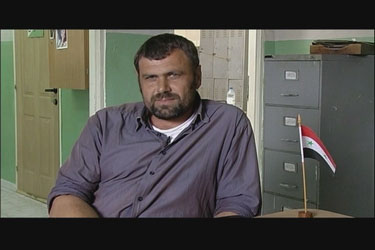 |
|
Screen Captures
Subtitle Sample
|
|
|
|
|
|
|
|
|
|
|
|
|
|
| DVD Box Cover |
|
CLICK to order from: |
| Distribution |
Koch Lorber Region 1 - NTSC |
|
![]()
![]()
![]()
![]()

